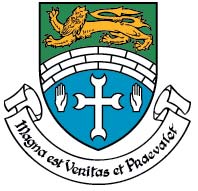| 2005 |

|
YEAR BOOK |
Athlone Institute of Technology
|
Role of new technologies in nurse education
|

-
�Pervasive computing facilities
-
�Server hosting of PowerPoint presentations with wireless remote PDA control and access
-
�Electronic response system for integrating test quiz assessments into lectures
-
�Video conferencing and wireless laptop provision for remote access to the web and institute electronic resources while students are on clinical placement
-
�Smart card technology for recording student attendance and payment for services as well as registration details and controlled access
-
�Mechatronic technology integrated into mannequins for simulating clinical procedures and various pathologies
-
�Digital recording and storage technology for teaching and assessing clinical procedures.
Electronic Response Systems (ERS) are designed to improve the interactions that take place within a classroom or lecture hall environment. An ERS provides the lecturer with technology that supports student engagement, integrating seamlessly with lecture delivery or other cooperative learning techniques. ERS offers the ability to poll students for their perceptions and opinions. Analysis and presentation of results are almost instantaneous, allowing immediate feedback as individual or class outcomes. The familiarity of the 'Who wants to be a millionaire' concept eases its classroom adoption and the minimal barriers presented by the technology accelerate valid participation levels. Comprehension, interest, and engagement can easily be measured and improved using an ERS.

General and psychiatric nursing students in AIT gain direct clinical experience while on placement in a host of geographically dispersed sites. To help create a more seamless continuity between the theory and practice elements and provide access to institute resources, while on placement, the department is experimenting with a combination of remote wireless network access and video conferencing facilities to create a virtual interface.
Technology is not a substitute for good creative and effective teaching but the installed base in the Department of Nursing & Health Science in AIT provides an integrated framework for investigative research studies of best teaching practice and technology utilisation in nurse education.
Contact: Ms Aideen O'Connor,
Head of Department of Nursing & Health Science,
Athlone Institute of Technology, Athlone;
Tel: 090 64 22593; E-mail: [email protected]